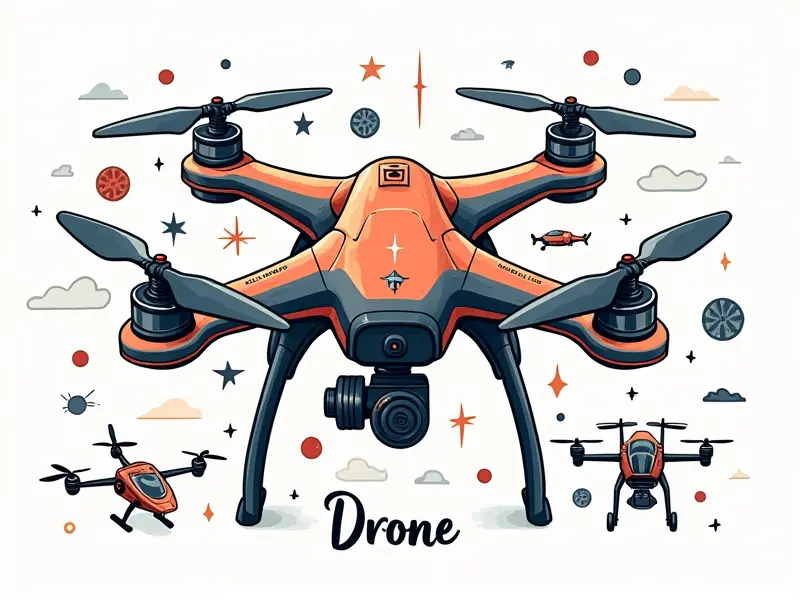Legal to fly a drone?

Is Flying Drones Legal in Your Area?
Flying drones has become increasingly popular for both recreational and commercial purposes. However, the legality of drone operation varies significantly depending on your location. Before taking off with your new quadcopter or FPV racing drone, it's crucial to understand the regulations that govern drone use.
Understanding Drone Regulations Today
The Federal Aviation Administration (FAA) in the United States and similar aviation authorities around the world have established comprehensive guidelines for drone operators. These rules are designed to ensure safety and privacy while promoting responsible use of unmanned aircraft systems (UAS).
Where and When Can I Fly a Drone?
The ability to fly your drone is contingent upon several factors, including airspace restrictions, no-fly zones, and local ordinances. Here’s what you need to know:
- Airspace Classification: Drones must be flown in accordance with the classification of the airspace they are operating within.
- No-Fly Zones: Areas such as airports, military bases, and national parks often have strict no-fly restrictions. Always check for these before flying.
- Time Restrictions: Some locations may impose time limitations on when drones can be flown to avoid conflicts with other airspace users.
Navigating Drone Laws for Beginners
If you're new to drone operation, the regulatory landscape might seem daunting. Here are some key points to consider:
- Registration Requirements: Many countries require drones over a certain weight or capability to be registered with the relevant aviation authority.
- Licensing and Certification: Some jurisdictions may mandate that drone operators obtain specific certifications before flying commercially.
- Privacy Concerns: Be aware of privacy laws, especially when capturing images or videos of people in private spaces without consent.
Drone Laws: What You Need to Know Before Flying
To ensure compliance with drone regulations, it’s essential to familiarize yourself with the following aspects:
- Airspace Authorization: Obtain any necessary authorizations from aviation authorities for flying in controlled airspace.
- Visual Line of Sight (VLOS): Most recreational and commercial drone operations require maintaining visual line of sight with the aircraft at all times.
- Height Limitations: Drones are typically restricted to a maximum altitude, often 400 feet above ground level in many regions.
The Basics of Legal Drone Flight
To operate your drone legally and safely, follow these fundamental guidelines:
- Check Local Regulations: Always consult the latest regulations from your local aviation authority or government website.
- Observe No-Fly Zones: Use online tools like B4UFLY to identify restricted areas before flying.
- Maintain VLOS: Keep your drone within visual line of sight at all times, and avoid flying over crowds or sensitive locations.
Are FPV Racing Drones Legal Where You Live?
First-person view (FPV) racing drones are a popular hobby but come with their own set of legal considerations:
- Speed and Agility: The high speed and maneuverability of FPV racing drones can pose unique risks, necessitating additional safety measures.
- Competitive Events: Participating in organized races may require adherence to specific rules set by event organizers or aviation authorities.
Can I Legally Fly My Drone Here?
To determine if you can legally fly your drone, consider the following steps:
- Review Local Laws: Check state and local ordinances that may affect where and how drones can be flown.
- Contact Authorities: Reach out to aviation authorities or local police departments for clarification on specific areas.
Drone Flying Rules Explained
The rules governing drone flight are designed to protect both the operator and others. Here’s a breakdown of common regulations:
- Airspace Classification: Understand the different types of airspace (Class G, Class E, etc.) and their specific requirements.
- No-Fly Zones: Identify restricted areas such as airports, military installations, and protected wildlife habitats.
Stay Legal: Tips for Safe Drone Operation
To stay compliant with drone laws while ensuring safe operation, follow these tips:
- Register Your Drone: Ensure your drone is registered if required by law.
- Obtain Certifications: If you plan to fly commercially, obtain the necessary certifications and licenses.
Know the Rules: Flying Drones Without Breaking Them
To avoid legal issues when flying your drone, it’s important to know and follow these rules:
- Airspace Authorization: Obtain any necessary authorizations for flying in controlled airspace.
- Maintain VLOS: Keep the drone within visual line of sight at all times.
Conclusion
Flying a drone can be an exhilarating and rewarding experience, but it’s crucial to understand and adhere to local regulations. By staying informed about airspace classifications, no-fly zones, and other legal requirements, you can enjoy your hobby or business while ensuring safety for everyone involved.

